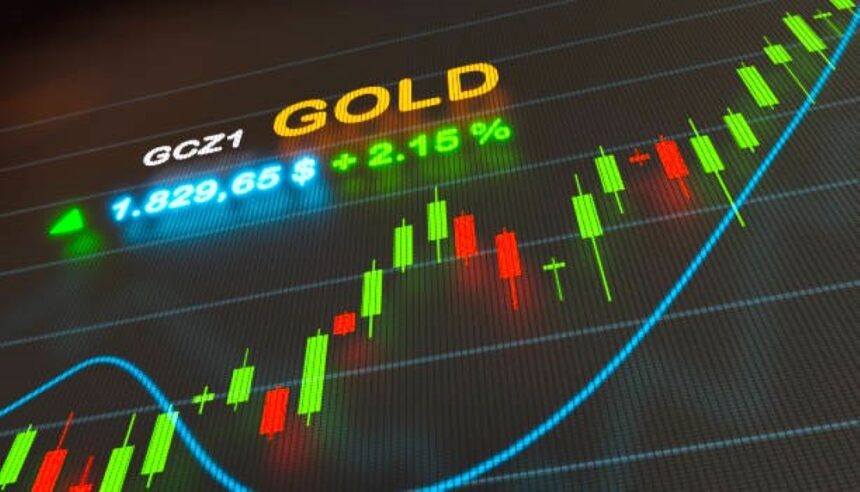Gold prices fall below $2,450 amid profit-taking, but remain stable due to several tailwinds.
The gold price (XAUUSD) fell below $2,430 during Monday’s European session. The precious metal encountered selling pressure as profit-taking set in while aiming to reclaim all-time highs above $2,480. The general outlook for the gold price remains positive, as US bond yields reach new annual lows.
The Fed is anticipated to decrease interest rates by more than 100 basis points this year.
10-year US Treasury yields fall to 3.67% as the Federal Reserve (Fed) appears certain to decrease interest rates in September. Reduced yields on interest-bearing assets Reduce the opportunity cost of holding non-yielding assets like gold.
The US dollar falls near its March low, while bond rates reach new annual lows.
The gold price (XAUUSD) fell below $2,430 during Monday’s European session. The US Dollar Index (DXY), which measures the value of the US dollar against six major currencies, falls to a March low of around 102.60.
According to the CME FedWatch tool, 30-day Federal Funds futures price data indicates that a 50-basis point (bp) interest rate drop in September is near. The report also reveals that the Fed is likely to lower its key borrowing rates by more than 100 basis points this year.
A spate of negative economic data from the United States (US) has led market expectations for greater rate reduction, raising questions about the Fed’s ability to accomplish a’soft landing’. A soft landing. is a condition in which the central bank controls inflation while avoiding an economic downturn.
Deteriorating labor market conditions and a significant slowdown in the manufacturing sector have fueled anticipation of large rate reduction. The July Nonfarm Payrolls (NFP) report revealed that labor demand dropped sharply, while the unemployment rate unexpectedly increased to its highest level since November 2021.
Fresh payrolls of 114K were much lower than predictions of 175K and the June reading of 179K. The unemployment rate increased to 4.3%, exceeding estimates and the previous release of 4.1%. Meanwhile, the ISM Manufacturing Purchasing Managers Index (PMI) declined at a quicker rate in July, reaching 46.8.
Daily Market movers: Gold’s near-term prognosis remains robust, while the US dollar and bond yields nosedive.
Despite rising geopolitical tensions and mounting concerns about a worldwide economic recession, the gold market has performed poorly. The conflicts in the Middle East look to have deepened as Iran-backed Hezbollah said it fired dozens of missiles at Israel on Saturday in revenge for the killing of Hamas leader Ismail Haniyeh by an Israeli airstrike in Tehran. Historically, geopolitical concerns boosted gold’s allure as a safe-haven asset.
The global demand climate has deteriorated as central banks have raised interest rates. China, the world’s second-largest economy, is experiencing a period of vulnerability due to low demand in both local and international markets. In July, the Caixin Manufacturing PMI unexpectedly fell to 49.8. The Eurozone economy is also experiencing demand challenges in its largest country, thus the German government has extended tax breaks to consumers and businesses. And now, slower US economic growth has fueled slowdown fears.
During Monday’s session, Gold investors will be looking for the July US ISM Services PMI, which will be released at 14:00 GMT. The PMI survey is expected to reveal that activity in the services sector increased to 51.0 after falling to 48.8 the previous month. Investors will also look at other Services PMI indicators, such as Prices Paid and New Orders, which show changes in input prices and forward demand, respectively.









